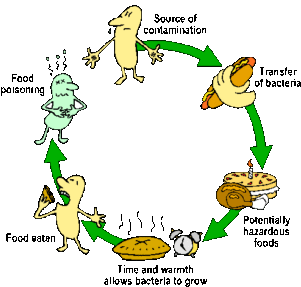Introduction
Ladies, have you ever been told that you get urinary tract infections (aka UTIs or “bladder infections”) because you didn’t wipe front to back instead of back to front? Men, have you ever been told that this could be a sign that your prostate needs to be examined This Straight, No Chaser answers simple questions on urinary tract infections. With over 8 millions cases and 100,000 hospitalizations a year due to these, it’s information you should know. We offer the information in question and answer format.
What are urinary tract infections? Are they the same as a bladder infection?
What these questions really ask is “What is the urinary tract?” The body’s drainage system serves to remove excess fluid and bodily waste. It includes the following organs:
- The kidneys serve to filter blood and produce approximately 1-2 quarts of urine per day as a result of this process.
- The ureters are tubes extending from the kidneys to the bladder, carrying filtered urine within them.
- The bladder is the pouch within which you store urine until you’re ready to release it.
- The urethra is a tube at the bottom of the bladder through which urine gets expelled.
A UTI is an infection anywhere along this path. Infections at different parts of the urinary tract can display different symptoms and have different complications.
What causes a UTI?
Bacteria are the most common cause of UTIs, particularly those that live in the bowel (such as E. coli) and are within or in close proximity to the vagina. Under most circumstances the body is very effective at removing bacteria and other microorganisms from the urinary tract (urinating just washes them out!), but some of us are at increased risk due to diminished defenses or other circumstances in which these microorganisms can grow.
Why do women get UTIs, and it seems like men don’t?
It is true that women get UTIs about four times more frequently than men, but anyone of any age or sex can be infected. Here are some reasons why.
- Women have a shorter urethra, which makes it easier for bacteria to reach the bladder.
- Also, the opening of a woman’s urethra is near the vagina and anus, where bacteria live.
- Women who use a diaphragm are also more likely to get UTIs than women who use other forms of birth control.
- The male prostate produces secretions that slow bacterial growth.
Are there other risk factors for UTIs?
Yes. Others at higher risk for UTIs include the following.
- those having diabetes or have lowered immune systems
- those habitually needing a tube to drain their bladder
- those with urinary tract abnormalities that block the flow of urine
- those with spinal cord injuries or other nerve damage
Additionally, once a man has a UTI, it’s more likely he’ll have the problem again because the bacteria are extremely difficult to reach once they set up shop in the male prostate.
Are UTIs serious?
Unless you describe the annoying symptoms as serious, most UTIs are not serious. However, UTIs can lead to severe complications if left untreated, including the following:
- Long lasting or recurrent kidney infections can cause permanent damage and scarring to the kidneys, which can create insufficient kidney function and produce high blood pressure and other problems.
- Kidney infections can enter the blood stream and become life threatening.
What are the signs and symptoms of a UTI?
You should see your physician if you develop any of the following signs or symptoms:
- A burning sensation with urination
- Bloody, cloudy, dark or otherwise discolored urine
- Fever or chills
- Foul-smelling urine
- Frequent or urgent need to urinate, regardless of the amount actually expressed
- Pain in your back or side below the ribs
How are UTIs diagnosed?
UTIs are diagnosed based both on symptoms and a lab test. Many of you have experienced your urine being sent to a lab from the emergency room or your doctor’s office. Based on a combination of symptoms, the presence of bacteria and white blood cells that have accumulated to fight the infection, the diagnosis will be made. If you have frequent infections, infections that don’t respond well to treatment, atypical presentations or are sick enough to be hospitalized, your urine may be cultured in an effort to grow the bacteria causing your symptoms. This allows more precise treatment regimens to be given. In other circumstances, tests may be done to check the normalcy of your urinary tract, including an ultrasound or CT scan. Further details on when and why this would be done is available on www.sterlingmedicaladvice.com.
An additional Straight, No Chaser will discuss prevention and treatment options for UTIs.
Follow us!
Ask your SMA expert consultant any questions you may have on this topic. Also, take the #72HoursChallenge, and join the community. Additionally, as a thank you, we’re offering you a complimentary 30-day membership at www.72hourslife.com. Just use the code #NoChaser, and yes, it’s ok if you share!
Order your copy of Dr. Sterling’s books There are 72 Hours in a Day: Using Efficiency to Better Enjoy Every Part of Your Life and The 72 Hours in a Day Workbook: The Journey to The 72 Hours Life in 72 Days at Amazon or at www.jeffreysterlingbooks.com. Another free benefit to our readers is introductory pricing with multiple orders and bundles!
Thanks for liking and following Straight, No Chaser! This public service provides a sample of http://www.SterlingMedicalAdvice.com (SMA) and 844-SMA-TALK. Likewise, please share our page with your friends on WordPress! Also like us on Facebook @ SterlingMedicalAdvice.com! Follow us on Twitter at @asksterlingmd.
Copyright © 2018 · Sterling Initiatives, LLC · Powered by WordPress
























